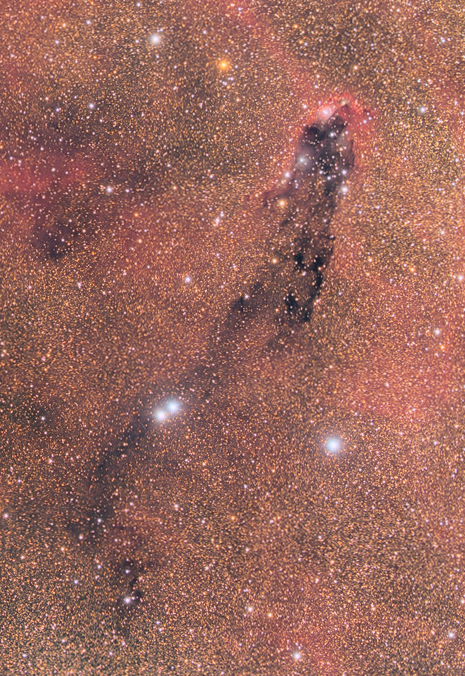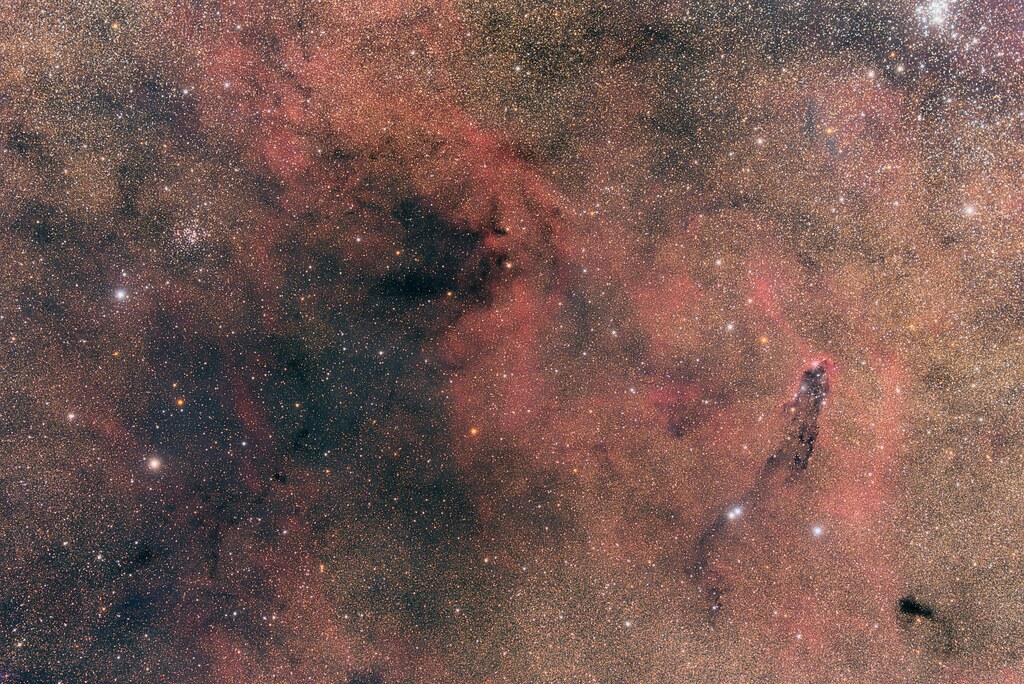With so many astrophotographers doing excellent work, it’s not easy to create something ‘new’ in our hobby. Nonetheless I always try to create images in such a way that it adds something new and unique. When I noticed this field of view in the DSS2 survey I got quite excited. I was preparing the Prawn nebula composition, but noticed this structure next to it. Together with the dark nebula (Barnard 44A) and the star cluster NGC 6192 this would make for a nice composition. The FOV was just too small to also really include NGC 6231 in there properly and I planned to crop it out in the end result. However, when researching the object I learned that NGC 6231 is in fact responsible for shaping the Dark Tower. So I decided to leave it in after all.
I couldn’t remember seeing an image of these region before, so that added to the excitement.
After the first night I could see this was going to be an image I would be quite pleased with, so I added a couple of more nights to it for a total exposure time of 9.3 hours.
Cometary globule
The dark cloud is known as a so called ‘cometary globule’ which is a relatively small dark cloud in which star formation may occur. According to APOD, the dark tower is “shaped by the intense ultraviolet radiation from the ‘OB association’ of very hot stars in NGC 6231”. This is the star cluster that can be seen at the top edge of the image. This ultraviolet light also powers the bordering red glow of hydrogen gas around the tower.
Also the blue reflection nebula can be seen in this structure, which is from hot stars embedded in the tower itself.

The Dark Tower acquisition details
Date: July 6,7,8,9
Location: Kiripotib, Namibia
Optics: APM 107/700 triplet with Riccardi 0.75 reducer
Mount: Fornax 51
Camera: Modified Nikon D600
Guiding: Lacerta MGEN
Exposures: 33x12min ISO200 + 17x8min ISO200

